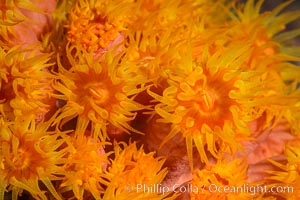
Orange Cup Coral, Tubastrea coccinea, Sea of Cortez, Mexico.
Species: Orange cup coral, Tubastrea coccinea
Location: Isla Espiritu Santo, Baja California, Mexico
Image ID: 33798
Species: Orange cup coral, Tubastrea coccinea
Location: Isla Espiritu Santo, Baja California, Mexico
Image ID: 33798
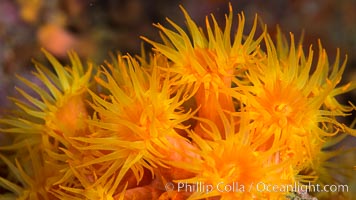
Orange Cup Coral, Tubastrea coccinea, Sea of Cortez, Mexico.
Species: Orange cup coral, Tubastrea coccinea
Location: Isla Espiritu Santo, Baja California, Mexico
Image ID: 33800
Species: Orange cup coral, Tubastrea coccinea
Location: Isla Espiritu Santo, Baja California, Mexico
Image ID: 33800
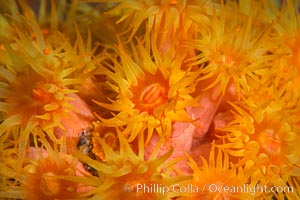
Orange Cup Coral, Tubastrea coccinea, Sea of Cortez, Mexico.
Species: Orange cup coral, Tubastrea coccinea
Location: Isla Espiritu Santo, Baja California, Mexico
Image ID: 33803
Species: Orange cup coral, Tubastrea coccinea
Location: Isla Espiritu Santo, Baja California, Mexico
Image ID: 33803
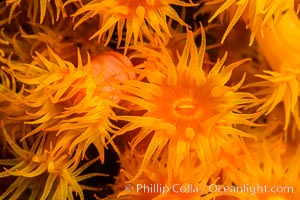
Orange Cup Coral, Tubastrea coccinea, Sea of Cortez, Mexico.
Species: Orange cup coral, Tubastrea coccinea
Location: Isla Espiritu Santo, Baja California, Mexico
Image ID: 33806
Species: Orange cup coral, Tubastrea coccinea
Location: Isla Espiritu Santo, Baja California, Mexico
Image ID: 33806
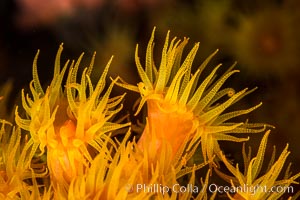
Orange Cup Coral, Tubastrea coccinea, Sea of Cortez, Mexico.
Species: Orange cup coral, Tubastrea coccinea
Location: Isla Espiritu Santo, Baja California, Mexico
Image ID: 33815
Species: Orange cup coral, Tubastrea coccinea
Location: Isla Espiritu Santo, Baja California, Mexico
Image ID: 33815
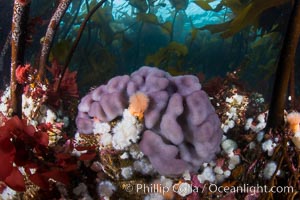
Purple sponge with white and orange metridium anemones, below bull kelp forest, Browning Pass, Vancouver Island.
Species: Bull kelp, Nereocystis luetkeana
Location: British Columbia, Canada
Image ID: 34347
Species: Bull kelp, Nereocystis luetkeana
Location: British Columbia, Canada
Image ID: 34347
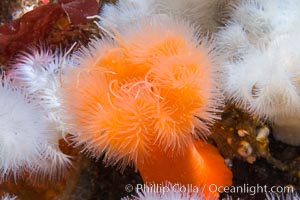
White and orange plumose anemones Metridium senile, Vancouver Island.
Species: Plumose anemone, Metridium senile
Location: British Columbia, Canada
Image ID: 34364
Species: Plumose anemone, Metridium senile
Location: British Columbia, Canada
Image ID: 34364
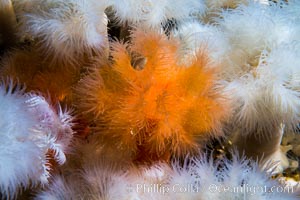
White and orange plumose anemones Metridium senile, Vancouver Island.
Species: Plumose anemone, Metridium senile
Location: British Columbia, Canada
Image ID: 34369
Species: Plumose anemone, Metridium senile
Location: British Columbia, Canada
Image ID: 34369
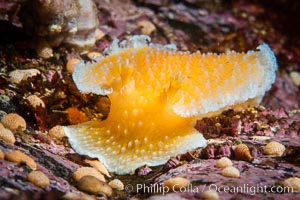
Orange Peel Nudibranch, Tochuina gigantea, Browning Pass, Vancouver Island.
Species: Orange peel nudibranch, Tochuina gigantea
Location: British Columbia, Canada
Image ID: 35355
Species: Orange peel nudibranch, Tochuina gigantea
Location: British Columbia, Canada
Image ID: 35355
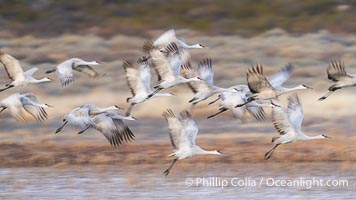
Sandhill Cranes in Flight at Sunrise, Bosque del Apache NWR. At sunrise, sandhill cranes will fly out from the pool in which they spent the night to range over Bosque del Apache NWR in search of food, returning to the pool at sunset.
Species: Sandhill Crane, Grus canadensis
Location: Bosque del Apache National Wildlife Refuge, Socorro, New Mexico
Image ID: 39909
Species: Sandhill Crane, Grus canadensis
Location: Bosque del Apache National Wildlife Refuge, Socorro, New Mexico
Image ID: 39909
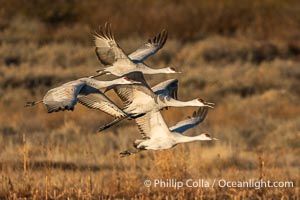
Sandhill Cranes in Flight at Sunrise, Bosque del Apache NWR. At sunrise, sandhill cranes will fly out from the pool in which they spent the night to range over Bosque del Apache NWR in search of food, returning to the pool at sunset.
Species: Sandhill Crane, Grus canadensis
Location: Bosque del Apache National Wildlife Refuge, Socorro, New Mexico
Image ID: 39934
Species: Sandhill Crane, Grus canadensis
Location: Bosque del Apache National Wildlife Refuge, Socorro, New Mexico
Image ID: 39934
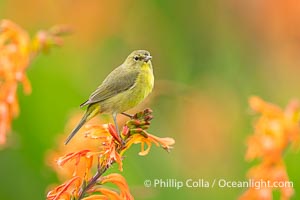
Orange-Crowned Warbler Amid Spring Flowers, Coast Trail, La Jolla.
Species: Orange-Crowned Warbler, Leiothlypis celata
Location: La Jolla, California
Image ID: 40244
Species: Orange-Crowned Warbler, Leiothlypis celata
Location: La Jolla, California
Image ID: 40244
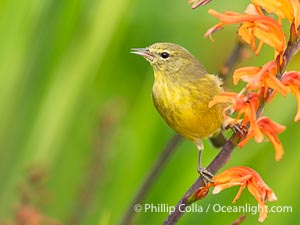
Orange-Crowned Warbler Amid Spring Flowers, Coast Trail, La Jolla.
Species: Orange-Crowned Warbler, Leiothlypis celata
Location: La Jolla, California
Image ID: 40250
Species: Orange-Crowned Warbler, Leiothlypis celata
Location: La Jolla, California
Image ID: 40250
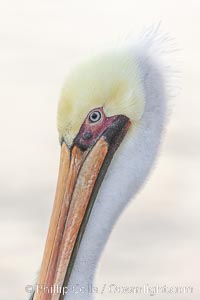
Brown pelican close-up portrait, orange-red bill with pink tissue surrounding eyes, yellow and white head feathers, adult winter non-breeding plumage.
Species: Brown Pelican, Pelecanus occidentalis, Pelecanus occidentalis californicus
Location: La Jolla, California
Image ID: 38595
Species: Brown Pelican, Pelecanus occidentalis, Pelecanus occidentalis californicus
Location: La Jolla, California
Image ID: 38595
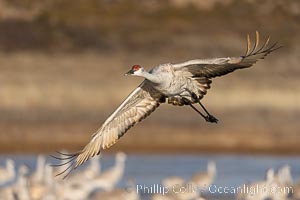
Sandhill Cranes in Flight at Sunrise, Bosque del Apache NWR. At sunrise, sandhill cranes will fly out from the pool in which they spent the night to range over Bosque del Apache NWR in search of food, returning to the pool at sunset.
Species: Sandhill crane, Grus canadensis
Location: Bosque del Apache National Wildlife Refuge, Socorro, New Mexico
Image ID: 38729
Species: Sandhill crane, Grus canadensis
Location: Bosque del Apache National Wildlife Refuge, Socorro, New Mexico
Image ID: 38729
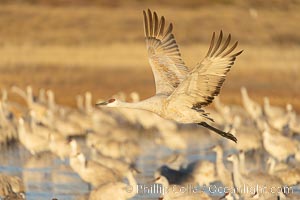
Sandhill Cranes in Flight at Sunrise, Bosque del Apache NWR. At sunrise, sandhill cranes will fly out from the pool in which they spent the night to range over Bosque del Apache NWR in search of food, returning to the pool at sunset.
Species: Sandhill crane, Grus canadensis
Location: Bosque del Apache National Wildlife Refuge, Socorro, New Mexico
Image ID: 38753
Species: Sandhill crane, Grus canadensis
Location: Bosque del Apache National Wildlife Refuge, Socorro, New Mexico
Image ID: 38753
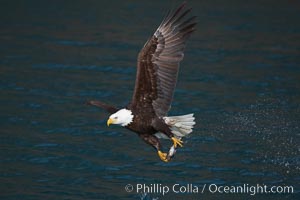
Bald eagle in flight drips water as it carries a fish in its talons that it has just pulled from the water.
Species: Bald eagle, Haliaeetus leucocephalus, Haliaeetus leucocephalus washingtoniensis
Location: Kenai Peninsula, Alaska
Image ID: 22637
Species: Bald eagle, Haliaeetus leucocephalus, Haliaeetus leucocephalus washingtoniensis
Location: Kenai Peninsula, Alaska
Image ID: 22637
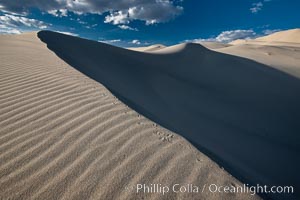
Eureka Dunes. The Eureka Valley Sand Dunes are California's tallest sand dunes, and one of the tallest in the United States. Rising 680' above the floor of the Eureka Valley, the Eureka sand dunes are home to several endangered species, as well as "singing sand" that makes strange sounds when it shifts. Located in the remote northern portion of Death Valley National Park, the Eureka Dunes see very few visitors.
Location: Eureka Dunes, Death Valley National Park, California
Image ID: 25274
Location: Eureka Dunes, Death Valley National Park, California
Image ID: 25274
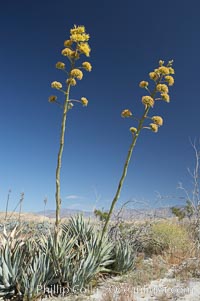
Desert agave, also known as the Century Plant, blooms in spring in Anza-Borrego Desert State Park. Desert agave is the only agave species to be found on the rocky slopes and flats bordering the Coachella Valley. It occurs over a wide range of elevations from 500 to over 4,000. It is called century plant in reference to the amount of time it takes it to bloom. This can be anywhere from 5 to 20 years. They send up towering flower stalks that can approach 15 feet in height. Sending up this tremendous display attracts a variety of pollinators including bats, hummingbirds, bees, moths and other insects and nectar-eating birds.
Species: Desert agave, Agave deserti
Image ID: 11550
Species: Desert agave, Agave deserti
Image ID: 11550
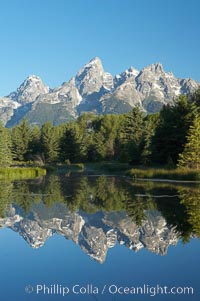
The Teton Range is reflected in the glassy waters of the Snake River at Schwabacher Landing.
Location: Schwabacher Landing, Grand Teton National Park, Wyoming
Image ID: 12985
Location: Schwabacher Landing, Grand Teton National Park, Wyoming
Image ID: 12985
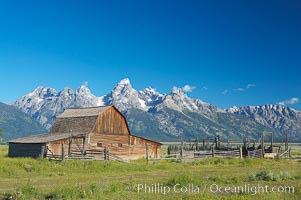
An old barn at Mormon Row is lit by the morning sun with the Teton Range rising in the distance.
Location: Mormon Row, Grand Teton National Park, Wyoming
Image ID: 12998
Location: Mormon Row, Grand Teton National Park, Wyoming
Image ID: 12998
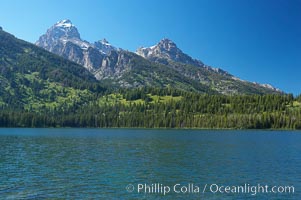
The Teton Range rises above Taggart Lake.
Location: Taggart Lake, Grand Teton National Park, Wyoming
Image ID: 13018
Location: Taggart Lake, Grand Teton National Park, Wyoming
Image ID: 13018
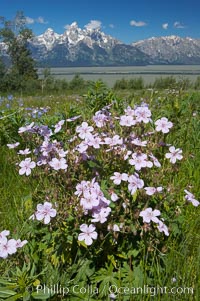
Wildflowers on Shadow Mountain with the Teton Range visible in the distance.
Location: Grand Teton National Park, Wyoming
Image ID: 13020
Location: Grand Teton National Park, Wyoming
Image ID: 13020
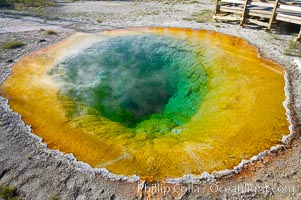
Morning Glory Pool has long been considered a must-see site in Yellowstone. At one time a road brought visitors to its brink. Over the years they threw coins, bottles and trash in the pool, reducing its flow and causing the red and orange bacteria to creep in from its edge, replacing the blue bacteria that thrive in the hotter water at the center of the pool. The pool is now accessed only by a foot path. Upper Geyser Basin.
Location: Upper Geyser Basin, Yellowstone National Park, Wyoming
Image ID: 13352
Location: Upper Geyser Basin, Yellowstone National Park, Wyoming
Image ID: 13352
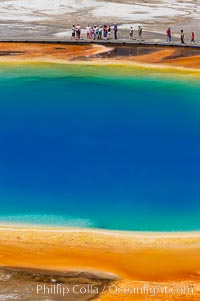
Grand Prismatic Spring displays a stunning rainbow of colors created by species of thermophilac (heat-loving) bacteria that thrive in narrow temperature ranges. The blue water in the center is too hot to support any bacterial life, while the outer orange rings are the coolest water. Grand Prismatic Spring is the largest spring in the United States and the third-largest in the world. Midway Geyser Basin.
Location: Midway Geyser Basin, Yellowstone National Park, Wyoming
Image ID: 13573
Location: Midway Geyser Basin, Yellowstone National Park, Wyoming
Image ID: 13573
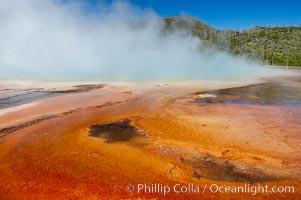
Grand Prismatic Spring displays brilliant colors along its edges, created by species of thermophilac (heat-loving) bacteria that thrive in narrow temperature ranges. The outer orange and red regions are the coolest water in the spring, where the overflow runs off. Midway Geyser Basin.
Location: Midway Geyser Basin, Yellowstone National Park, Wyoming
Image ID: 13587
Location: Midway Geyser Basin, Yellowstone National Park, Wyoming
Image ID: 13587
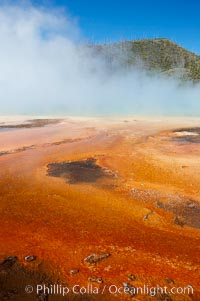
Grand Prismatic Spring displays brilliant colors along its edges, created by species of thermophilac (heat-loving) bacteria that thrive in narrow temperature ranges. The outer orange and red regions are the coolest water in the spring, where the overflow runs off. Midway Geyser Basin.
Location: Midway Geyser Basin, Yellowstone National Park, Wyoming
Image ID: 13591
Location: Midway Geyser Basin, Yellowstone National Park, Wyoming
Image ID: 13591
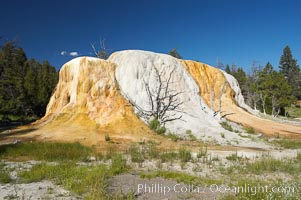
Orange Spring Mound. Many years of mineral deposition has built up Orange Spring Mound, part of the Mammoth Hot Springs complex.
Location: Mammoth Hot Springs, Yellowstone National Park, Wyoming
Image ID: 13614
Location: Mammoth Hot Springs, Yellowstone National Park, Wyoming
Image ID: 13614
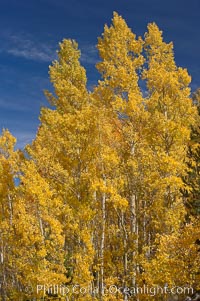
Aspen trees turn yellow and orange in early October, South Fork of Bishop Creek Canyon.
Species: Aspen, Populus tremuloides
Location: Bishop Creek Canyon, Sierra Nevada Mountains, California
Image ID: 17503
Species: Aspen, Populus tremuloides
Location: Bishop Creek Canyon, Sierra Nevada Mountains, California
Image ID: 17503
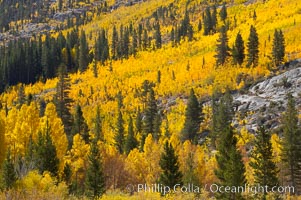
Aspen trees turn yellow and orange in early October, South Fork of Bishop Creek Canyon.
Species: Aspen, Populus tremuloides
Location: Bishop Creek Canyon, Sierra Nevada Mountains, California
Image ID: 17532
Species: Aspen, Populus tremuloides
Location: Bishop Creek Canyon, Sierra Nevada Mountains, California
Image ID: 17532